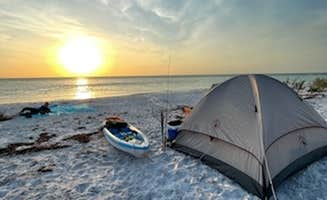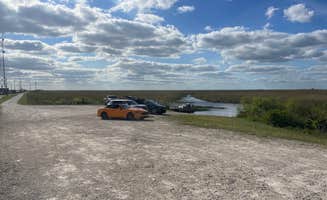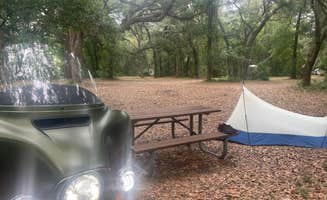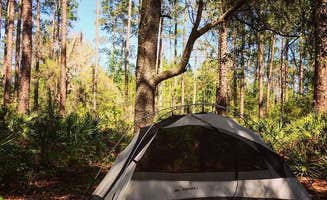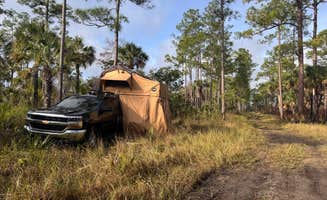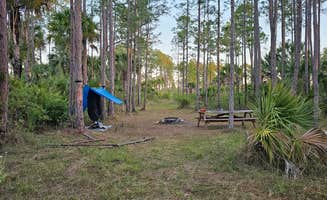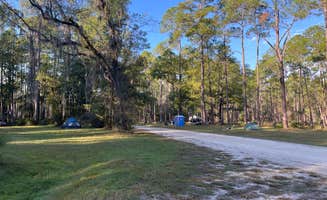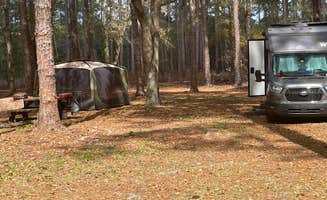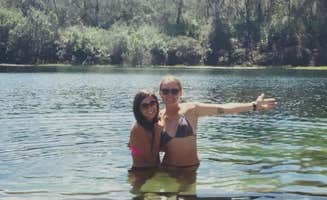Located a hefty trek down a winding gravel road west of Route 19, you’ll have to maneuver around divots and potholes along this narrow gravel, dusty roadway for the better part of 2 miles before arriving to a small sign on the left-hand side of the road that indicates you’ve arrived at Davenport Recreational Area – so finding this place is relatively easy. Unless you make the unwise decision to turn into one of the small handful of options beforehand that would have you drive down a patch of road that likely you are not authorized to, my only advice would be not to exceed 15 MPH on this road as the poor condition of the road could do damage to a lower-lying vehicle. Once you come across the Davenport Recreational Area sign, take a right and slowly (as the road conditions worsen as you get off the main road) follow the narrow tire-rutted pathway to a fork, where on the right you’ll see TRAILHEAD marked on a tree to your right– here you want to turn left instead and follow the pathway to its conclusion, which is a round-about that you will have no other alternative but to stop and park your vehicle.
Here at literally ‘the end of the road,’ you’ll be greeted by a dozen or so medium-sized Magnolias that blot out the sun’s rays and cast an unusually spooky shadow on this area, made even more dramatic by all of the Spanish moss falling from the tree limbs of these magnificent trees. While the ground here is flat – welcome to Florida, where for the most part, that’s par for the course – but barren and comprised of a combination of dirt and sand silt, which isn’t so bad when it’s dry, but when there’s rain, we’re talking some pretty messy mud-like conditions. As for what you’ll find here at this natural cul-de-sac, there isn’t anything. Literally. No picnic tables. No fire ring. No stand-up grill. No potable(or for that matter, non-potable) water spigot. Nothing. There is what looks to be a small wooden sign that likely was filled with information at some point in time that might have educated you about your stay here, but even that had nothing on it, apart from a single hand-made sign above it, indicating: “You are trash, if you leave trash,” which I wholeheartedly agree with. In all, perhaps there’s 5-6 individual spots that you could make a campsite from.
If you are a true primitive camper who really wants NOTHING to complement or aid their outdoor survivalist experiment, then you have hit the primitive camping jackpot! Apart from the solid peace & quiet you’ll experience here, there’s an amazing little access point here to the Ocklawaha river that runs through this neck of the woods – which used to be a riverboat stop where steamboats would stop to fuel or disembark enroute to Silver Springs via the St. Johns which this tributary eventually connects to. Apart from being a scenic access point to the river, if you are looking to catch and eat your meals, then this will certainly be an added bonus. The steps down the ravine to the river basin are somewhat steep, but for anyone towing a light-weight kayak or paddleboard, me thinks you could likely manage to bring your watercraft down here and easily access emerald-green waters shouldered with an abundance of spade-shaped lily pads to grab some great oaring.
When we stopped by, there was a team of fisherman there – not camping, mind you – but having a great afternoon nonetheless of ‘hooking‘ em’ and according to these local anglers, the fishing was great. Apart from this and the shade that the mighty Magnolias provide, the only other amenity that exists out here are the few trails that you can jump on to get a bit of hiking in. One word of caution, from my fishermen friends, is to be on the look-out for ‘Coyo-Dogs’ (a cross between canine species where a dog mates with a coyote) and black bear, both of which have been known to frequent this area, especially at night.
Insider’s tips? Here’s a few: (1) There’s a 1.2 mile interpretive hiking trail called Davenport Landing Trail that will take to you to the former steamboat landing, which makes for a medium-grade hike with some interesting history; (2) If you have an explorer’s mindset, you’ll be richly rewarded here as there is a small gravesite from the Civil War that you can find along with middens along the Ocklawaha River hiding traces of the Timucuan Indians that once populated this area; (3) For fellow arborists, in addition to finding these amazing Magnolias that seem to be especially planted here for you, additionally there’s sweetgum and red maple trees; and (4) You definitely want to keep your eyes peeled for alligators in this area, where while we didn’t see any right at the ravine’s base, we were told that plenty were sunbathing right around the bend in the river from where we were.
Happy Camping!

